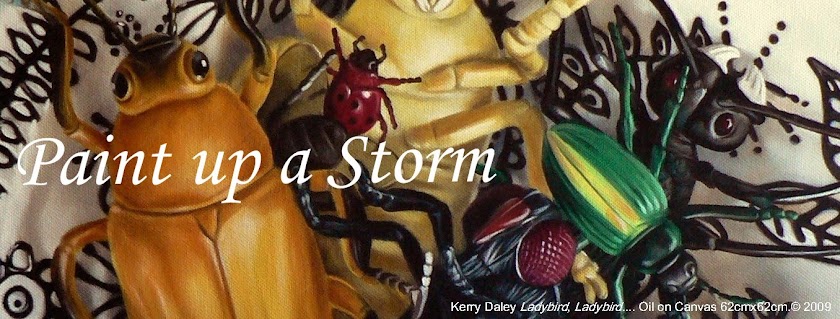When we want to make art but don't know where to start, or feel stuck in a rut or a slump - it can help to think about why other people make art.
Thinking generally about why humans make art, can help us to clarify specifically why we want to make art ourselves.
Humans are driven to create and there are probably as many reasons to make art as there are people, but here are the top 10 reasons why people have made art throughout all time.
1. We make art to tell a story.
Art is primarily a powerful form of communication, a visual language - we speak to our viewers through our work and we tell them things. The stories we relate may be other peoples' stories, our own stories, those of our family or culture, or even universal stories. The desire to communicate is an overwhelming human need that has found expression in all forms of creative work throughout history.
2. We make art to honour the gods.
Western art was once dominated by images of Christianity. The Church was a huge patron of the arts, commissioning countless important religious work. In times when few people were literate, the walls and ceilings of churches were painted with scenes to tell stories of the bible. Wealthy individuals also commissioned devotional objects from artists. Prior to Christian times, art of pre-history and of the Greek and Roman periods incorporated religious and mythological themes. In modern times, with the decline of organised religion, many artists make work to meet a personal spiritual need.
3. We make art to mirror our external reality.
Artists have painted nature for centuries, but until the Dutch artists of the 17th century started to paint landscapes and still life for their own sake, it served as only a backdrop to more 'important' subject matter. Since that time, we have been captivated by the people, objects and natural wonders of the world around us and compelled to capture a likeness of them for posterity.
4. We make art to clarify our internal reality.
Our internal world is rich with thoughts, feelings and emotions that we draw on to inspire our work. We can use our imagination to create elaborate fantasies. Emotion or mood can be expressed in realistic work through poses and expressions and in non-representational work, through colour and composition. Some artists choose to emphasise the concept of the work as opposed to its physical expression, the intellectual idea becoming more important than the look of the work itself.
5. We make art to keep a record.
Before the invention of photography, an important function of art was to make a visual document. Those in power wanted a record of themselves, their families and significant events. This was especially true if the wealthy patron was the hero or victor in the situation. Although art is not used in this way in society today, it can still be a powerful way to record and remember on a personal level.
6. We make art to influence.
Some artists use their work to support a regime which they believe is best for their society or the world, and other use art to oppose a repressive or corrupt government. Art can be a powerful tool of propaganda. Large public works are often commissioned by ruling powers to encourage patriotism. As a form of communication, art can be used to influence those viewing it.
7. We make art for fun, to entertain, to lift our spirits.
Art can be a creative and satisfying pastime, it can be therapeutic and uplifting for the artist, and also a positive viewing experience. Some art is humourous and fun, incorporating visual puns and in-jokes, some is light hearted and deliberately entertaining.
8. We make art to demonstrate collective pride.
The art work of certain cultural groups can be identified by a unique style, the style becoming synonymous with the people and customs of that group. In some traditional societies, dress, beadwork, ceramic wares and painting styles for example are attributed to the group rather than a specific individual.
9. We make art to decorate our belongings and our surroundings.
From the time man started to make tools, he has been compelled to make those tools beautiful as well as functional. From the day man sought shelter from the elements, he has been driven to decorate that shelter. Visual appeal has always been as important, and in some cases more important, than practicality. Art satisfies our inherent desire for beauty.
10. We make art because we can.
And that is the wonder of it all, through art, we are able to communicate, to express ourselves spiritually, to imitate the world around us, to disclose our innermost secrets; we are able to influence the thoughts and feelings of others, to entertain, to demonstrate allegiance and to add to the beauty around us. Through art we can be totally ourselves and totally human.
These are the top 10 reasons why humans throughout the ages have made art, how many reasons do we have to not make art?
Perhaps that is a story for another day.


































